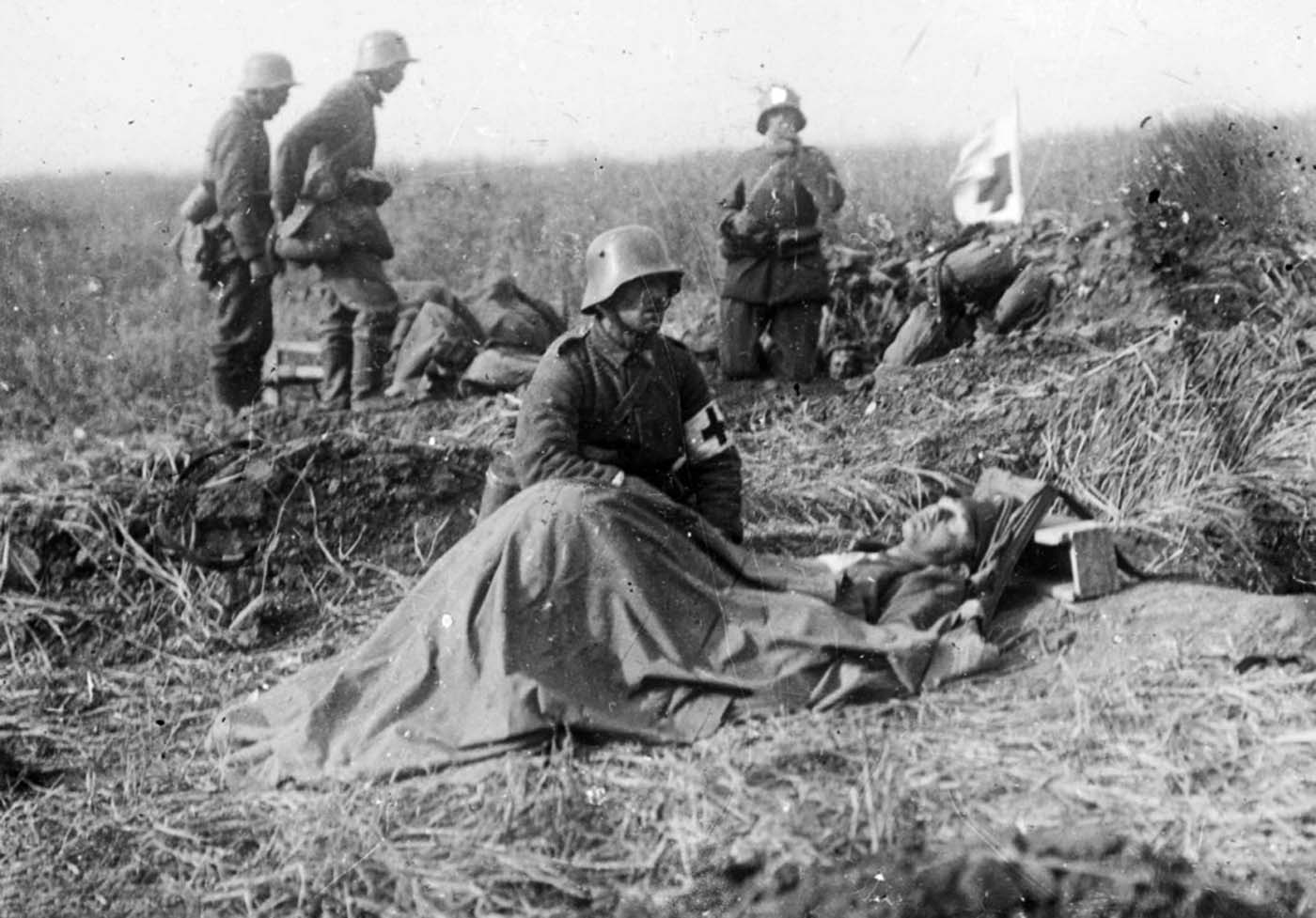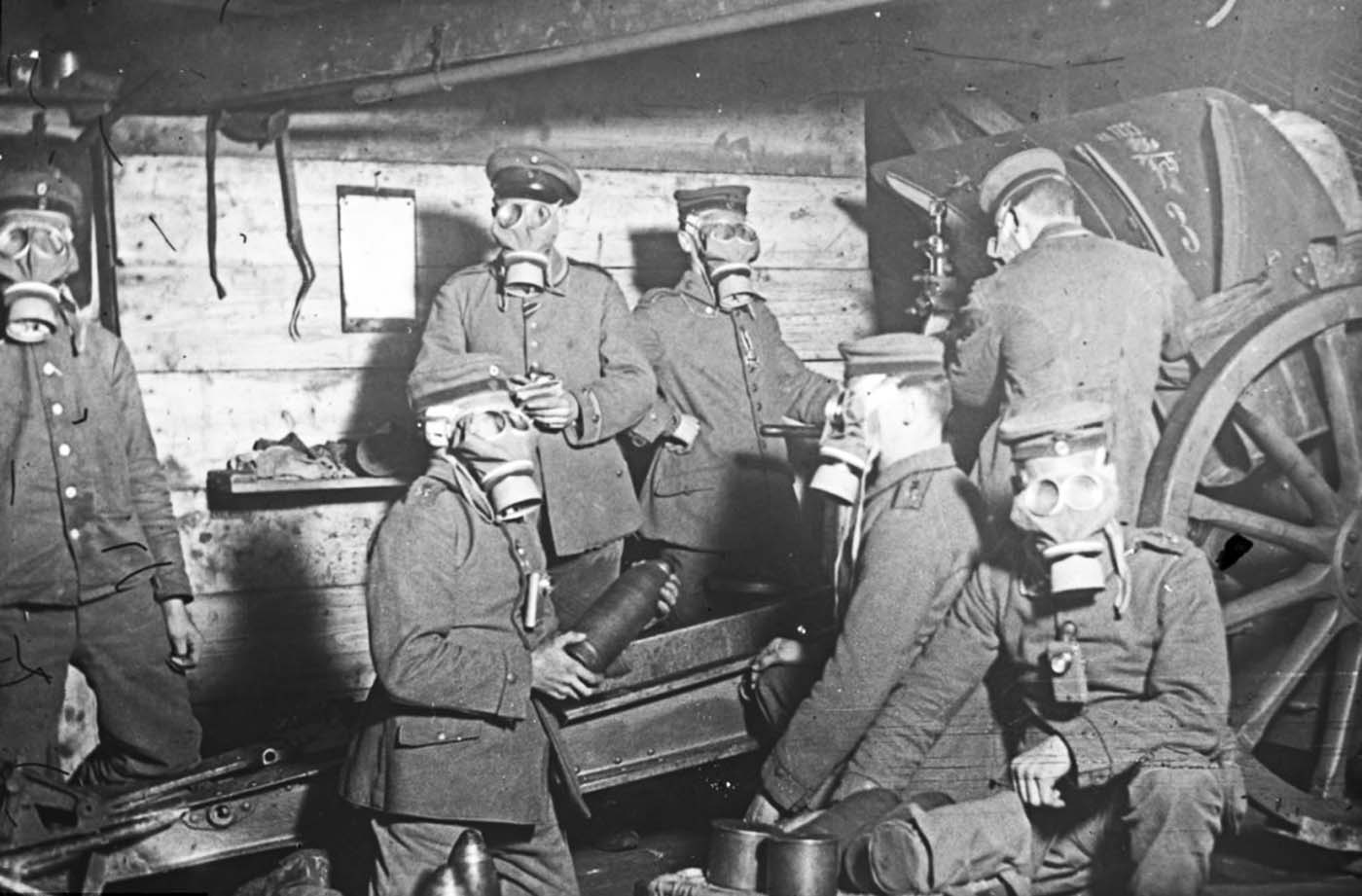As his haunting pictures, taken with a Contessa camera, make all too clear, life in the trenches was a harrowing experience. The images provide an insight into the epic machinery of war – and capture the darkest moments of the battle, with bodies strewn among the rubble. Returning home in 1918, Walter set up a photography shop in the town of Tubingen, where he worked until his death in 1945. Walter’s son Volkmar discovered the pictures in 2011 and decided to share them with the public. In a BBC documentary about the collection from which it’s taken, Walter’s son argues that the photograph is “like an accusation against war”. Some of Walter’s other photos include a picture of the bodies scattered over no man’s land titled “After the Storm” and another of a German medical officer comforting a soldier in his last moments. Kleinfeldt’s images also capture the everyday life of soldiers when they were away from the battlefield, washing in rivers and wandering around German towns. The Somme campaign in 1916 was the first great offensive of World War I for the British, and it produced a more critical British attitude toward the war. During and after the Somme, the British army started a real improvement in tactics. Also, the French attacked at the Somme and achieved greater advances on July 1 than the British did, with far fewer casualties. But it is the losses that are most remembered. The first day of the Somme offensive, July 1, 1916, resulted in 57,470 British casualties, greater than the total combined British casualties in the Crimean, Boer, and Korean wars. In contrast, the French, with fewer divisions, suffered only around 2,000 casualties. By the time the offensive ended in November, the British had suffered around 420,000 casualties, and the French about 200,000. German casualty numbers are controversial but maybe about 465,000. (Photo credit: Walter Kleinfeldt / BBC / Captions: Daily Mail UK). Notify me of new posts by email.
Δ Subscribe








